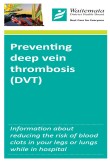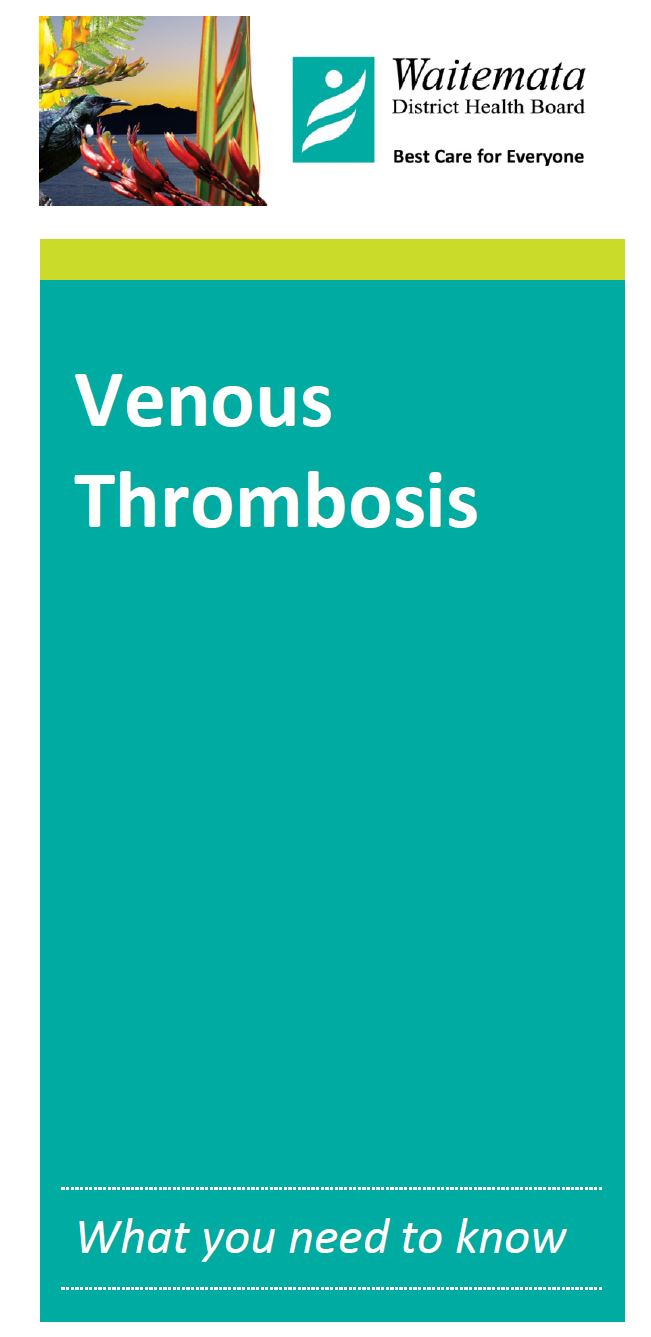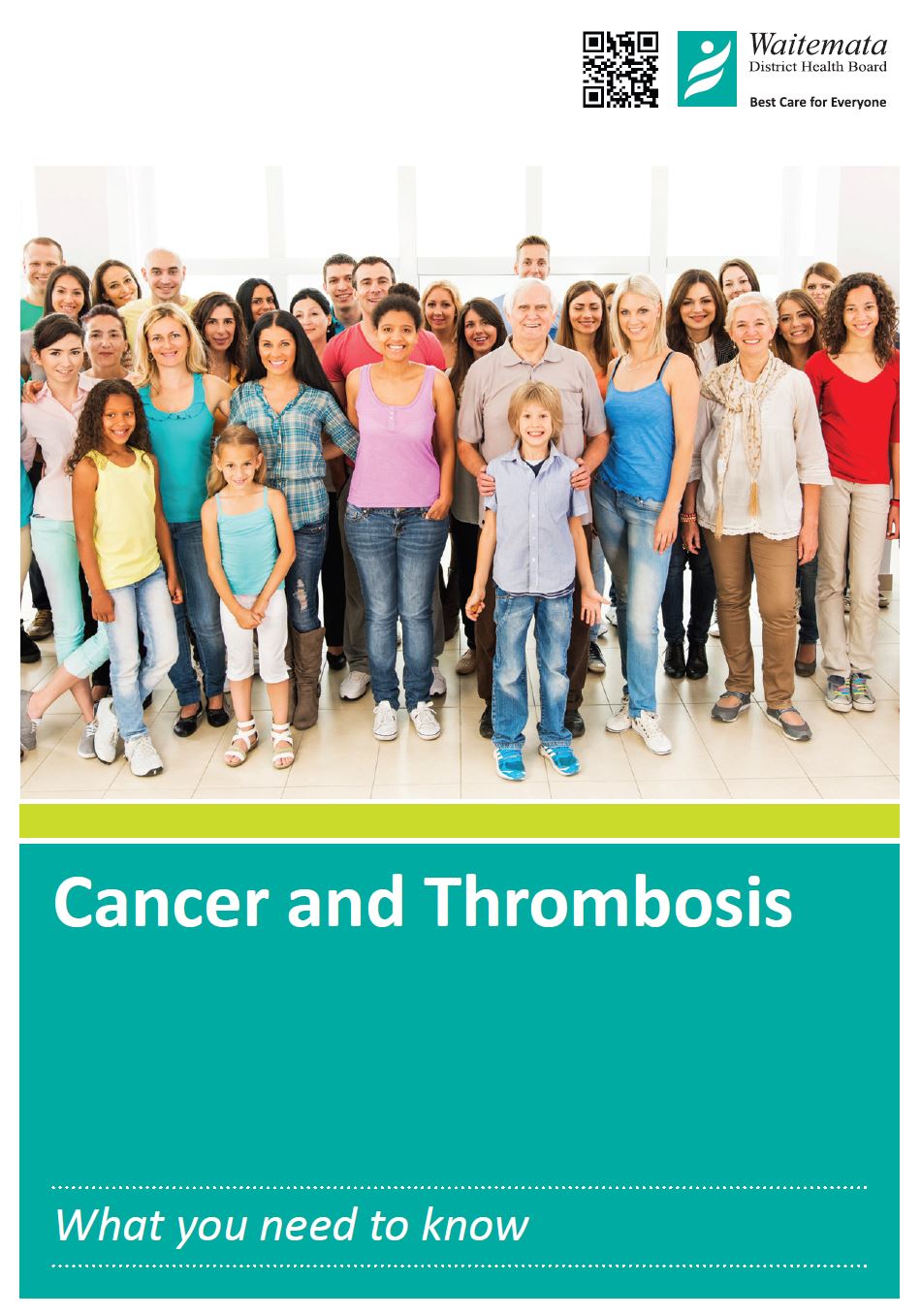Deep vein thrombosis | DVT or poketoto
Blood clots in deep veins
Key points about deep vein thrombosis
- Veins are blood vessels that carry blood from the tissues of the body back to your heart.
- A DVT (deep vein thrombosis) is a blood clot that occurs in the deep veins. The most common veins to be affected are those in your legs.
- The blood clot can travel elsewhere in the body and this is called an embolus. If the embolus travels and gets stuck in the lungs this is called pulmonary embolism and is the most serious complication from DVT.

A DVT can occur in any limb but tends to occur more commonly in the leg – involving the foot, ankle, calf or whole leg.
Signs and symptoms can include:
- Swelling in the affected limb. Rarely, there may be swelling in both legs. This is from the blood collecting behind the clot.
- Pain in your leg. The pain often starts in your calf and can feel like cramping or a soreness.
- Change of colour in the leg – bluish, purple or reddish skin colour.
- Feeling of warmth on the skin of the painful or swollen area.
These symptoms may often be confused with a sprained ankle or other injury. DVT can sometimes occur without any noticeable symptoms. If you develop signs or symptoms of DVT, contact your doctor urgently.
Sometimes blood clots can form in the veins that are closer to the surface of the skin, called the superficial veins. A clot in one of these veins is called superficial thrombophlebitis. It is not as worrying as a DVT because it can’t travel to the lungs. They also cause different symptoms to DVTs. Superficial clots are more painful and cause redness or even infection. They cause the veins to become hard and bulge out making them look like cords. This is most commonly seen below the knee.
| Seek immediate medical help if: |
|
You have symptoms of DVT, such as pain and swelling, and: |
Many factors can increase your risk of developing DVT. The more risk factors you have, the greater your risk.
A DVT is more likely to happen if you:
- are over 60 years of age
- are overweight
- smoke
- have had a DVT before
- take the contraceptive pill or HRT (hormone replacement therapy)
- have cancer or heart failure
- have varicose veins.
There are also some temporary situations when you're at more risk of DVT. These include if you:
- are staying in or recently left hospital – especially if you cannot move around much (like after an operation)
- are confined to bed
- go on a long journey (more than 4 hours) by plane, car or train
- are pregnant or have had a baby in the previous 6 weeks
- are dehydrated.
If you suspect you have a DVT, even if you have mild symptoms, you must seek medical attention urgently. This can prevent serious complications such as a pulmonary embolism.
To diagnose DVT, your doctor will ask you questions about your symptoms. You may also have a physical exam to check for any areas of swelling, tenderness or discoloration on your skin.
Your doctor may suggest further testing, such as a D-dimer blood test and/or an ultrasound scan. The d-dimer test is elevated with blood clots but general inflammation and other conditions also lead to elevation. The ultrasound scan can show whether blood is flowing normally through your vein. Your doctor will make a recommendation about which test to do based on how likely it is that you have a DVT. For example, if you have a negative D-dimer test and have a low risk of DVT based on the doctor’s assessment, then an ultrasound isn’t needed.
The main aim of DVT treatment is to prevent the clot from getting any bigger, and prevent it from breaking loose and causing a pulmonary embolism. After that, the goal is to reduce your chances of deep vein thrombosis happening again. Treatment will depend on the location and severity of the clot. Treatment usually includes a combination of medicine and compression.
With treatment, the pain and swelling usually reduces within a few days of starting treatment.
Medicines – anticoagulants
Anticoagulants work by interrupting the clot-forming process. For the treatment of a DVT, anticoagulants can stop the existing clot from getting bigger.
Common examples of anticoagulant medicines are:
- rivaroxaban tablets
- enoxaparin (also called Clexane) which is given by injection under the skin (subcutaneously). Some people need to be given this for a few days before they can change to the pills.
- warfarin tablets. This needs regular blood tests.
- dabigatran capsules.
How long you will need anticoagulation treatment depends on many factors but it is usually taken for at least 3 months. In some cases, it may be needed for a longer period or even lifelong.
DVT in pregnancy is treated differently and usually needs a longer treatment course. Your doctor will give you advice on the treatments available.
Watch for signs of bleeding. These medications help to prevent dangerous blood clots from forming or getting bigger but they also can make bleeding more troublesome. It is important to keep yourself away from situations where you might get injured and seek medical care if you have signs of bleeding.
You may like to consider getting a medic alert tag. If you need treatment but you're too unwell to explain your medical conditions, the tag will inform medical personnel that you are on an anticoagulant and are at risk of bleeding.
Compression stockings
These are special types of stockings called 'graded compression stockings' that are made from special elastic to give support to the lower legs. They encourage circulation and help to reduce swelling. The pressure they provide helps reduce the chances that your blood will pool and clot. These stockings are worn on your legs from your feet to about the level of your knees.
Although DVT cannot be prevented in all situations, there are a few things you can do to lower your risk:
- Avoid sitting for long periods of time. Elevate (raise) your legs if you are sitting for moderate periods of time.
- Do not cross your legs when sitting.
- Get up and move around every hour or so.
- If you are travelling on a long journey or are bedridden in hospital there are special precautions you can take. See travel-related DVT and hospital-related DVT below.
- If you smoke, quit smoking or reduce the amount that you smoke. The nicotine causes your blood vessels to become smaller which means the blood flow is decreased.
- If you are overweight, aim to reduce weight.
- Exercise regularly.
- Keep hydrated – drink 6 to 8 glasses of water (200–250 mLs) a day.
- Avoid alcohol and medications that make you drowsy because they make it harder for you to move around.
Apps reviewed by Healthify
You may find it useful to look at some Nutrition, exercise and weight management app and Quit smoking apps.
Anyone traveling more than 4 hours by air, by car, or by bus can be at risk for blood clots. When sitting for prolonged periods your blood flows more slowly. The slower blood flow means that blood can collect in limbs like your legs and cause a blood clot (DVT).
- The risk of DVT from travel is small especially if you are healthy and have no risk factors. Research studies suggest that there is about 1 DVT for every 4,656 flights that last for 4 hours or more.
- The longer the journey, the more likely you are to develop a DVT.
It has to be stressed that the vast majority of travellers have no problems. Other risk factors are involved, so for most people the chance of developing a DVT just from taking a long journey is very small.
| If you develop a swollen painful, red, swollen calf or breathing difficulties shortly after a long journey then see a doctor urgently. |
|---|
Who is at risk of travel-related DVT?
Anyone may develop a DVT following a long journey but the risk is increased for some groups. Read more above. See your doctor before travelling on a long journey so you can discuss your risk and what action you may need to take.
Tips to reduce your risk of travel-related DVT
Most travellers have no problems during travel – many people get slight, painless puffiness of feet and ankles after a long journey but this is not due to a DVT. Whilst travelling on a long journey, particularly on a long-haul plane trip, here are a few things you can do to reduce your risk of DVT:
Do simple exercises
- Exercise your calf and foot muscles regularly, bending and straightening your legs, feet and toes when you are seated. Repeat this every half hour or so.
- Press the balls of your feet down hard against the floor or foot rest every so often. This helps to increase the blood flow in your legs.
- If on a plane, take a walk up and down the aisle every hour or so, when the seatbelt signs are not switched on.
- Make sure you have as much space as possible in front of you for your legs to move. So avoid having bags under the seat in front of you and recline your seat where possible.
- Take all opportunities to get up to stretch your legs, when there are stops in your journey.
Drink plenty of water to keep hydrated
- Drink normal amounts of liquids to avoid dehydration.
- Do not drink too much alcohol. Alcohol can cause dehydration and immobility.
- Do not take sleeping tablets, which cause you to remain in the same position for a long time.
Elastic compression stockings
Correctly fitted compression stockings can prevent DVT if you are at an increased risk. The slight pressure from the stocking helps to prevent blood ‘pooling’ in the calf.
- Buy the stockings (or 'flight socks') from your pharmacy. Ask the pharmacist for advice about the correct sort.
- Compression stockings and flight socks come in different sizes with different levels of compression. Class 1 stockings have the lowest level of compression and are generally sufficient to prevent DVT.
- Stockings do not replace the need for regular exercises. They should be worn in addition to doing exercises.
- If you have any of the risk factors mentioned above, it would be wise to wear these stockings for your journey.
Medicine
Medicine to prevent DVT when travelling for long distances is not usually recommended but if you are at high risk of having a DVT, speak to you doctor about it.
After the journey
Have a little walk straight after the journey to get the circulation going. Most travellers have no problems – many people get slight, painless puffiness of feet and ankles after a long journey but this is not due to a DVT.
If you develop a swollen painful, red, swollen calf or breathing difficulties shortly after a long journey then see a doctor urgently.
Usually, muscle movements help to push the blood around your body by squeezing the veins. This helps blood to flow freely without clotting. If you are not mobile for some time, blood flow can become slow and allow a clot to form. Read more about blood clots.
You may be in hospital after surgery or an injury, and as your body tries to protect itself from blood loss, it causes your blood to clot more easily. But this also increases the risk of unwanted clotting like DVT.
Who is most at risk?
The risk of DVT is highest in people who have had:
- major joint surgery (eg, hip or knee replacement)
- major surgery to the abdomen (tummy), hips, chest or legs
- major surgery for cancer
- severe physical injury or trauma
- serious sudden illness such as heart attack, heart failure, stroke, spinal cord injury, severe infection, cancer or chronic obstructive pulmonary disease (COPD).
If you're thought to be at risk of developing DVT, your healthcare team can take a number of measures to prevent a blood clot forming.
| Preventing a clot | Description |
|
Before going to hospital |
If you are going to hospital to have an operation, your doctor will assess your risk of DVT.
|
|
While you are in hospital |
Depending on your risk factors and individual circumstances, your healthcare team will discuss treatment options with you. Treatment may include:
If you experience any of the following while you are in hospital, call a nurse immediately:
|
|
When you leave hospital |
You may need to continue to take anticoagulant medicine and wear compression stockings when you leave hospital. Before you leave, your healthcare team should advise you about how to use your treatment, how long to continue using it for, and who to contact if you experience any of the symptoms described above. |
Next time you are on a long flight, bus or car trip, try these gentle exercises. Also get up and walk around often if this is possible. Exercises and walking will reduce your risk of developing a deep vein thrombosis or clot in your legs.
Video: DVT (Deep Vein Thrombosis) Prevention Exercises - Ask Doctor Jo
This video may take a few moments to load.
(Ask Dr Jo, a physical therapist, 2016)
Deep vein thrombosis(external link)(external link) Patient Info, UK
Deep vein thrombosis in pregnancy(external link)(external link) Healthinfo, NZ
Apps
Nutrition, exercise and weight management app
Quit smoking apps
Resources
Preventing deep vein thrombosis [PDF, 933 KB] Waitematā DHB, NZ, 2020
Venous thrombosis [PDF, 196 KB] Waitematā DHB, 2020
References
- Deep vein thrombosis (blood clots)(external link)(external link) Centres for Disease Control and Prevention (CDC), US, 2020
- DVT (Deep vein thrombosis)(external link)(external link) NHS, UK, 2019
- Deep Vein thrombosis(external link) Fit for Travel NHS, UK
- Providing medical advice to travellers(external link) BPAC, NZ, 2011
Prevention of thromboembolic events from long haul travel
| Consensus¹ |
|---|
There is a risk of venous thromboembolism (VTE) during travel, particularly with longer flights (>4 hours).
|
Guidelines
- The Medical Journal of Australia – New Guidelines from the Thrombosis and Haemostasis Society of Australia and NZ for the Diagnosis and Management of Venous Thromboembolism(external link)
- National Center for Biotechnology Information (NCBI):
Apps
Nutrition, exercise and weight management app
Quit smoking apps
Brochures

Waitematā DHB, NZ, 2020

Waitematā DHB, 2020

Waitematā DHB, NZ, 2020
Credits: Healthify editorial team. Healthify is brought to you by Health Navigator Charitable Trust.
Reviewed by: Dr Jeremy Steinberg, FRNZCGP
Last reviewed:
Page last updated:





